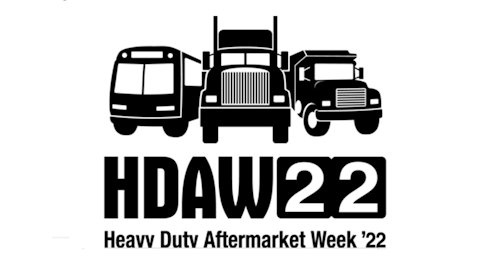With the annual HDAW festivities over, thousands of folks return from Grapevine, Texas with knowledge about the heavy truck parts industry and how to put it to use. Over the course of 4 days, much was discussed about the current state of the world and what effects it might have on the heavy-duty parts industry. In particular, the current supply chain issues drew much discussion. So we’ve created a quick summary guide on how you can improve supply chain issues as a seller using TPI.
A distributor, supplier and remanufacturer weighed in to discuss how aftermarket distributors can improve supply chain shortage issues during SOLD. Their insight? Over-prepare. You can never have too much inventory these days.
Their insight? Over-prepare. You can never have too much inventory these days.
For starters, plan ahead. That might sound difficult given the circumstances, but operating on a fixed trajectory will help in the long run. Overbuying might sound undesirable, but having excess inventory is a lot easier to manage than not having enough. By ordering excess product to keep your stores, depots and yards supplied for a set period of time, you’ll avert the crisis of running out of things to provide to your clients.
To help accomplish this goal of staying ahead, many sellers are forming ad hoc committees with their managers to coordinate supply efforts, thus ensuring at least some inventory is available for customers. By over-purchasing, sellers can offset any impacts to their supply chain, and ensure that they have some breathing room to coordinate future supply efforts.
Another useful tip is to utilize the full capabilities you have as a remanufacturer. Joe Kripli, president of Auto Parts Remanufacturing Association (APRA) and the Heavy Duty Reman Group, says, “There’s this huge demand [for parts] and I really feel remanufacturing is a great solution because you as distributors, shops and fleets can use that to your advantage…You control supply [in that way].”
Kripli is referring to the usefulness of remanufacturing, and having the ability to salvage and reuse parts such as turbos, which are casted. Kripli estimates that close to 90 percent of turbines, housing and compressors have solid resale value.
In case you couldn’t make it to HDAW, below are suggestions from the session on how distributors can improve their supply chain issues. These tips will also help you as a seller on TPI:
- Add more human resources and increase your internal and external communications with your team members and suppliers to ensure your procurement ordering process is as expeditious as possible.
- Do not cancel backorders. Increase supplier communication to ensure you are getting truthful and honest feedback. Ordering extra parts from a secondary supplier will allow the buffer room you may need.
- Adjust your minimum and maximum inventory numbers upward to allow for increased inventory. Also adjust your lead times as some suppliers’ lead times are 12 weeks or more.
- Identify and develop second, third and fourth supply chain partners.
- Increase your top movers to a six-month supply.
- Increase your shop supplies to six months, maybe a year. This includes all required PPE.
- Look into reman partnerships and develop larger core banks that can be remanufactured when needed.
Source: Truck Parts Services

Great post! I totally see the supply issue day to day
Thanks for these tips! Great content! Love your blog!
Much needed tips, thank you for sharing
Great contents and great conversation here!
Great content and conversation here.
Very nice article.
Comment section is actually funny
Thank you for sharing this
I’m also interested in green supply chain! Looking forward to next post!
Thanks for sharing this post, always keeping the people informed
So informative! Thank you!
great comments here wow!
Very interesting solution, specially in these hard times for supply chains. Thanks for sharing such a valuable content.
Thanks for the good content! Love reading your words and blog
Very informative. Thanks for sharing
Very valuable content, I was actually looking for this.
Thanks for sharing, very insightful! SO nice
That’s great, I would like to try it^^
I am planning to change my job to supply chain management and this post was really helpful. Thank you for sharing!
Wow, thanks for this surprising article^^
Awesome tips! I’ll make sure to apply them to my blog !